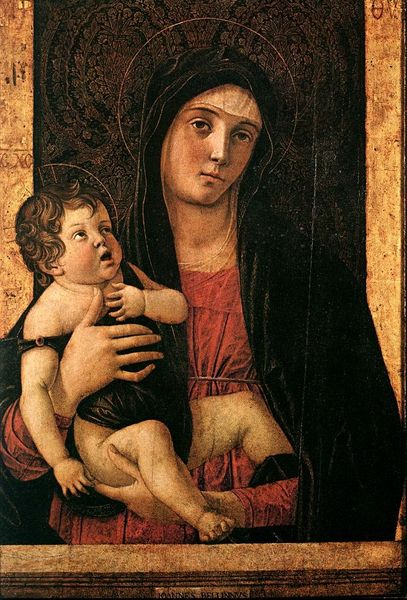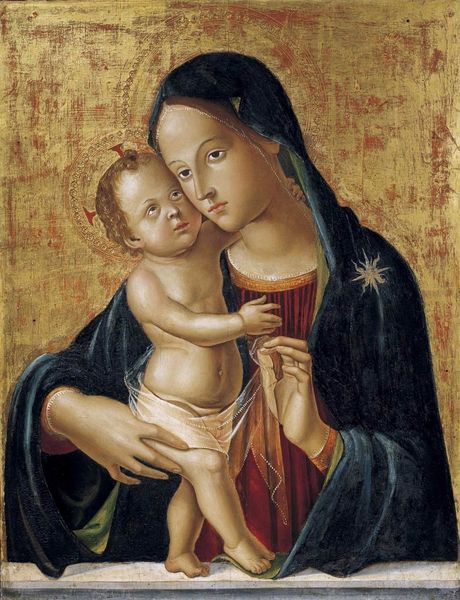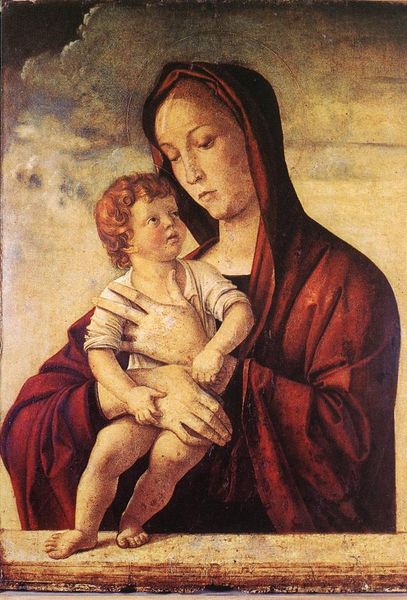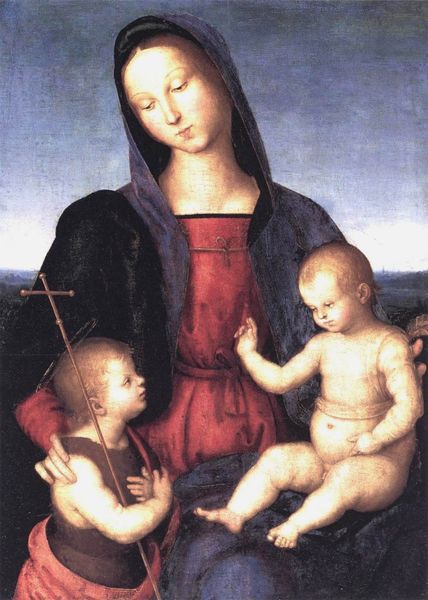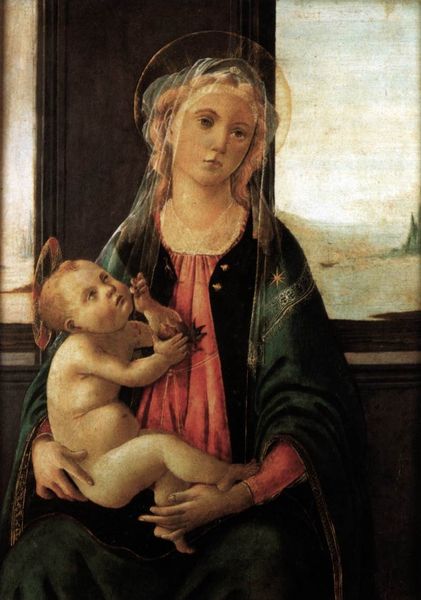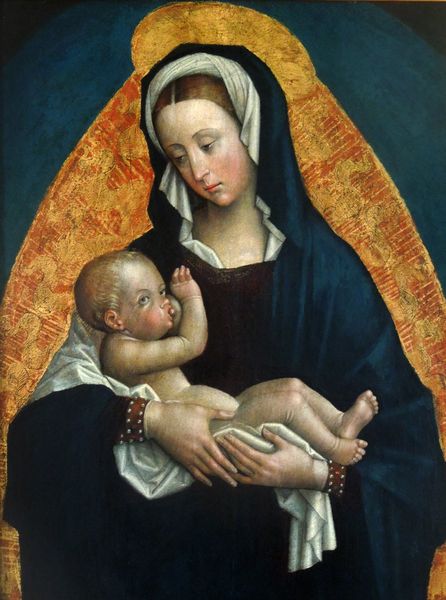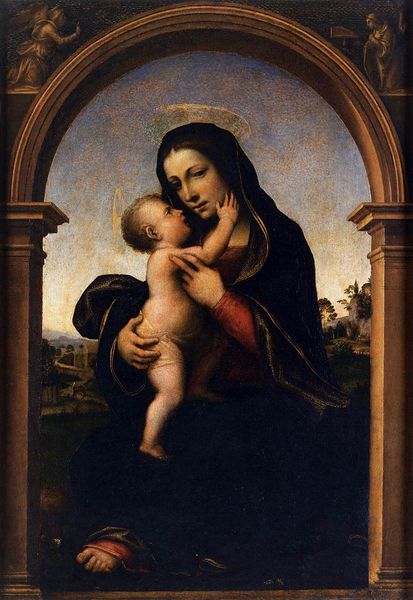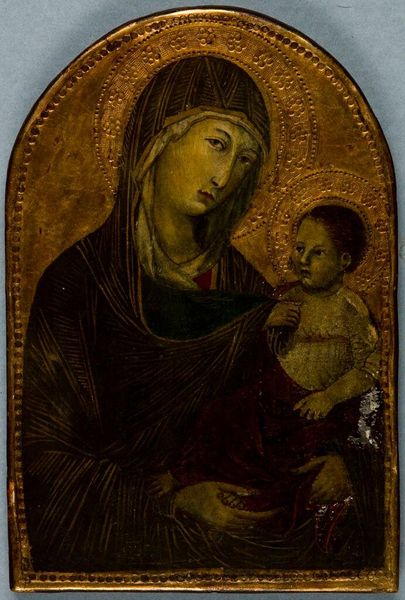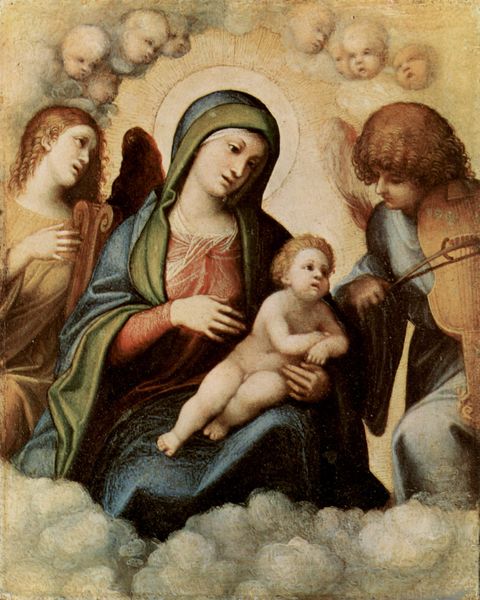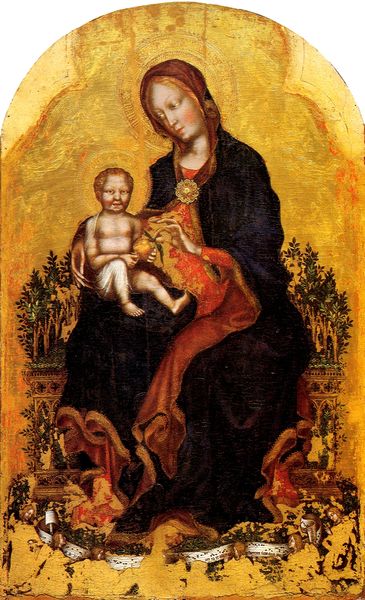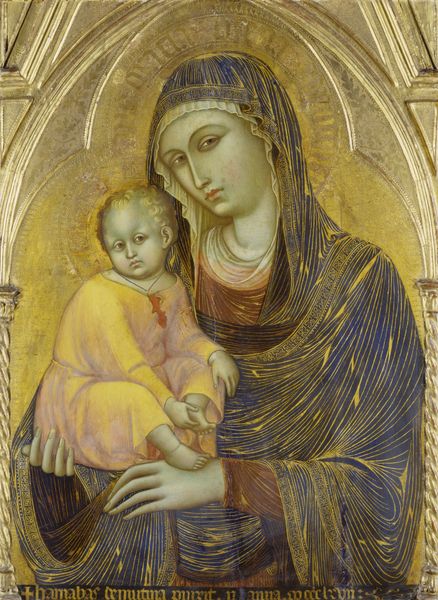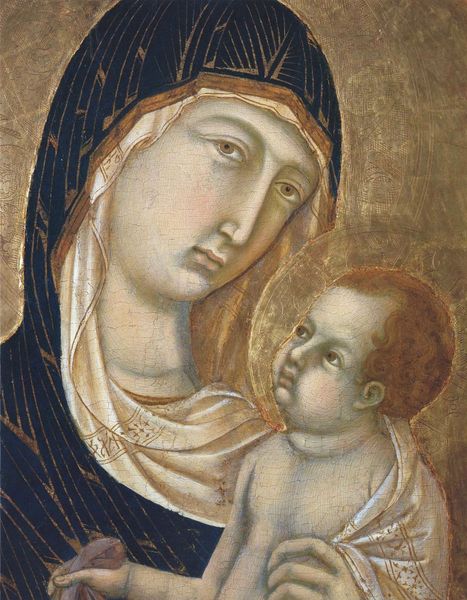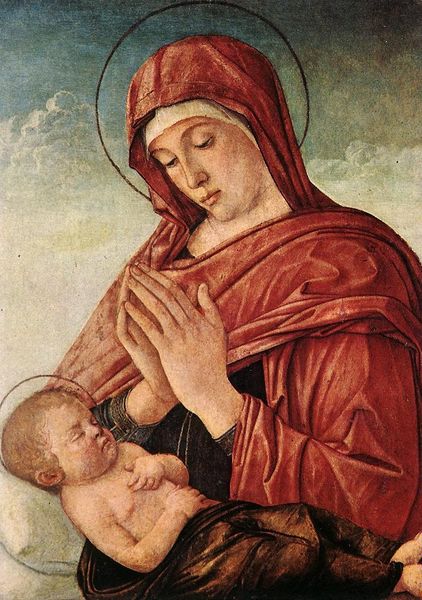
painting, oil-paint
#
portrait
#
high-renaissance
#
allegory
#
painting
#
oil-paint
#
figuration
#
oil painting
#
christianity
#
portrait drawing
#
history-painting
#
italian-renaissance
#
portrait art
#
angel
#
christ
Dimensions: 120 x 65 cm
Copyright: Public domain
Sandro Botticelli made this panel painting of the Madonna and Child in Florence. This image blends the religious and the social, reflecting the important role that the church had in Florentine society. The Madonna's serene expression and elegant drapery reflect the artistic values of the Italian Renaissance. The figures are set against a gold background populated with seraphim, highlighting the divine nature of the subject. Botticelli uses this traditional visual language to convey religious meaning to his contemporary audience. But the painting also reflects the social context of its time. During the Renaissance, wealthy patrons often commissioned religious artworks for their homes or as donations to churches. These works served not only as objects of devotion but also as symbols of wealth and social status. We can examine the patronage records and family histories of the time to reveal the complex relationship between art, religion, and power in Renaissance Florence. The meaning of art always depends on the context of its creation and reception. It's by researching the conditions of artistic production that we can come to understand its power.
Comments
No comments
Be the first to comment and join the conversation on the ultimate creative platform.
